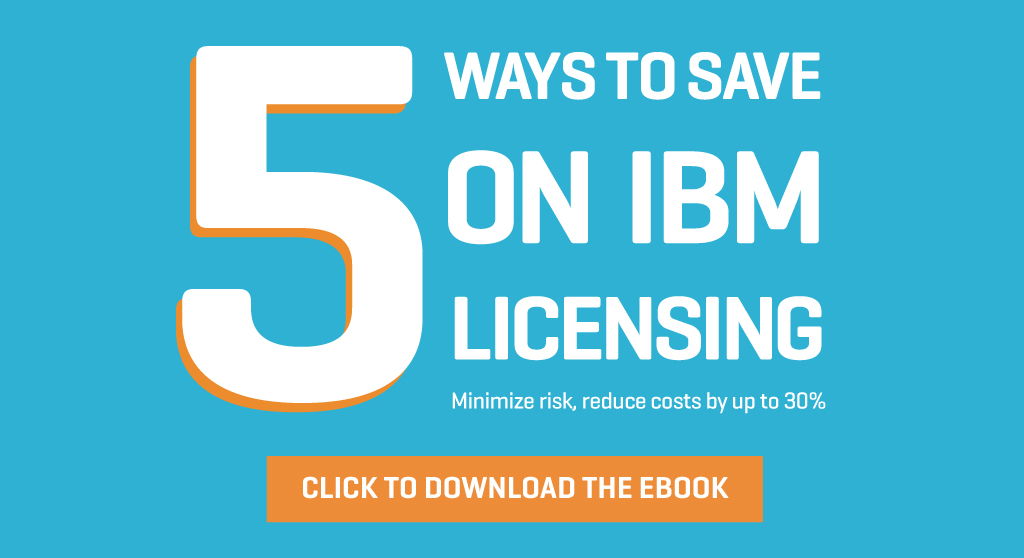IBM calls time on ILMT 7.5 – What it means for you

Have you ever experienced that feeling of excitement when you’ve just purchased a new piece of cutting-edge hardware? I felt that way when I bought my first iPad the instant they became available on the market in my home country of Belgium. Just 18 months later, Apple announced that it would no longer support operating system upgrades for first generation iPads. By then, my iPad had rapidly become a life companion, providing me with personalized entertainment, access to my e-mails, appointments, messages, social media, games, fitness apps and TV was about to become defunct. I could no longer update the software I was using, I couldn’t download new applications, and performance came to a standstill. I hung on, persevered with a few workarounds, but eventually my reliance on this tool forced me to reluctantly buy a replacement.
Why I am telling you this story? Because the same is true for business software. In some cases, enterprises hold on to legacy software, even when it is no longer supported, because the effort and ROI to replace it doesn’t make business sense at face value. The consequences of end-of-life for my iPad were my own personal costs and time to purchase and setup a new device.
The consequences for legacy business software can be much more severe. Using software beyond end of life or end of support exposes your enterprise to security risks and hidden costs.
A pressing example of end-of-support software is IBM’s License Metric Tool (ILMT) 7.5 – a tool used extensively by enterprises relying on IBM software. ILMT enables significant licensing cost reductions as, in virtualized environments, it enables organizations to purchase licenses based on the capacity of the machines on which the software is installed. For example, if you install IBM software on a virtual machine (VM), licensing obligations are relative to capacity of that machine. You don’t need to license the full server. This is IBM’s way of delivering sub-capacity licensing. However, to take advantage of the significant cost reductions afforded by sub-capacity you need to install the most recent version of ILMT on machines running IBM software.
April 30, 2017 marks end of support for ILMT 7.5. But perhaps more significantly, output from this product will no longer be accepted for sub-capacity reporting. According to IBM:
RUNNING LEGACY ILMT – the consequences
Let’s first talk about the cost issue. Sub-capacity licensing is complex, so to help customers IBM has provided an illustrative example highlighting the potential savings in PVU obligations for full-capacity and sub-capacity licensing for their MQ and WebSphere software products. The details are available in the IBM Knowledge Center. My point here is simple: if the potential for savings are massive, the potential risk is equally massive when your estate no longer meets IBM’s software licensing rules.
Without any cases to point to, it’s hard to predict what IBM will do in an audit situation. But my best guess points me in the direction of fines based on full-capacity calculations.
End-of-life can also present performance issues. Like in my iPad story, end-of-life often prevents taking advantage of new technologies. IBM recently announced that their standard edition of AIX 7.2 will soon be available for monthly licensing under Passport Advantage. However, this Operating System and all software running on top of it cannot be captured by ILMT 7.x.
For a full list of non-supported applications, see IBM’s eligible virtualization technologies.
ILMT 9.x – the good, the bad & the ugly
The good: ILMT 9.x offers many new features that will help you manage your IBM software. The ability to create separate PVU reports for different products, generating reports for different periods, and manual adjustment of PVU per core counts are just some of them.
The bad: be sure to save your audit reports for at least two years, as those generated in 7.x are not migrated to 9.
The ugly: if you haven’t already migrated, my advice is to make the shift to ILMT 9.x before the 90-day rule comes into force (customers have 90 days to install ILMT from first eligible sub-capacity deployment) after which you run the risk of breaching your T&Cs.
End of Vista on the horizon
April 2017 also marks end-of-life for Windows Vista, currently estimated to still be running on more than 10 million PCs around the world. End-of-life for operating systems like Vista may not present compliance issues, but without support, my top priority would be to prevent security breaches. My advice for managing Vista, or any other end-of-life software, would be to first determine if anyone in your organization is still using the software, and this can be easily checked in Snow License Manager by searching for it in the list of installed applications.
Upgrading to ILMT 9.x is just one of many steps you can take to ensure that you are getting the most out of your investment in IBM software. As products and bundles change over time (and licensing requirements vary for hot, warm, and cold servers), lack of visibility into installed IBM software can lead to unbudgeted costs.
My final piece of advice would be to check out some of our tips on how to efficiently manage these and other issues in our e-Book: 5 ways to save on IBM licensing.
